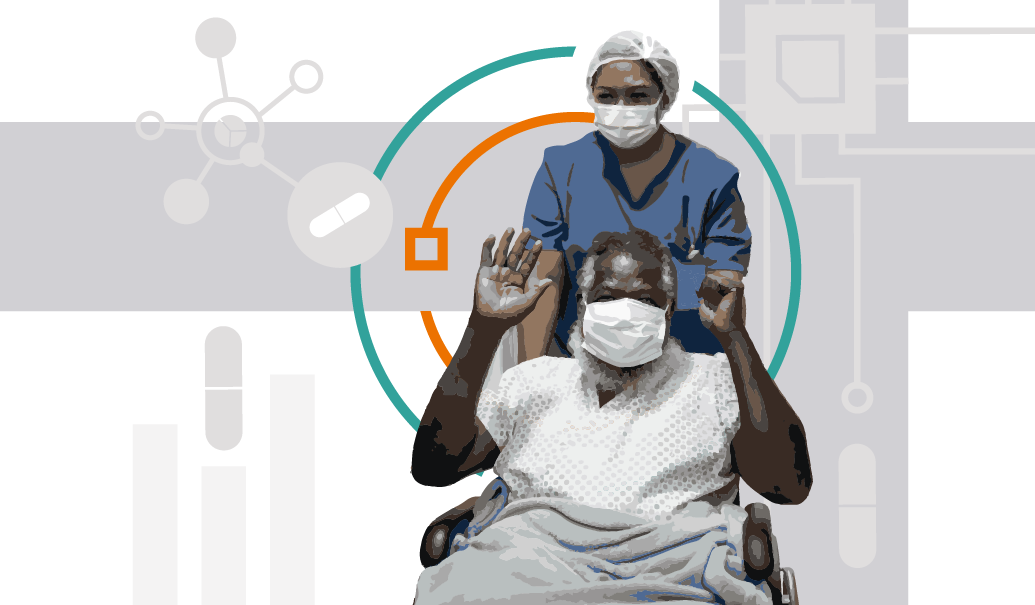After decades of research in gene therapies—as well as successes and setbacks—approval of therapies for rare diseases are offering patients hope. Recent years have seen the approval of treatments such as Zolgensma for spinal muscular atrophy (SMA) and Luxturna for Leber’s congenital amaurosis (LCA) and retinitis pigmentosa (RP). This means approximately 2,000 U.S.-based patients are eligible for gene therapies today and can now hope for transformative outcomes.
While the science of gene therapies and their potential effects on health outcomes are impressive, adoption has not been as high as expected. So far in the U.S., only an estimated 300 patients have received commercial gene therapies, or approximately 15% of the eligible population.
There are several explanations for this slow uptake, ranging from barriers around the logistics of deploying these treatments, to a general lack of awareness of them by patients and physicians—not to mention hurdles tied to reimbursement and commercialization. Gene therapy manufacturers have an opportunity to play a major role in addressing these challenges to help pave the way for a future gene therapy landscape. If successful, these actions may help manufacturers tap into the potential pool of gene-therapy-eligible patients that’s expected to reach approximately 400,000 in the U.S. by 2025.
Note: Patient figures derived for the U.S. only
Educating providers and patients on gene therapies
At the forefront of barriers to adoption is a general lack of awareness across stakeholders. Primarily patients and caregivers, these stakeholders need to know what gene therapies are, their mechanism of action, transformative potential and realistic safety risks.
Beyond patients and their caregivers, healthcare professionals (HCPs) lack education on these therapies and are hesitant to use them—a factor that is heightened by the absence of peer-to-peer networks. These fears stem, in part, from secondary cancers that arose during gene therapy trials of the 1990s, as well as some recent clinical trials being put on hold by regulators due to severe adverse events. One example is the FDA’s temporary clinical hold on uniQure AMT-061 after a patient was diagnosed with liver cancer, and a similar hold on Lysogene’s LYS-SAF302 following localized abnormal brain activity in a trial participant. This high level of uncertainty about the safety of gene therapies, in addition to a general lack of long-term data (especially for any newly approved gene therapy) is only adding fuel to the fire.
A gene therapy call to action for pharma from industry leaders
According to key opinion leaders (KOLs) across the gene therapy landscape, there is a clear call to action for pharmaceutical companies to:
- Actively engage in educating institutions across their peripheral hospital staff to their leading physicians.
- Support patient and caregiver education by creating patient and caregiver materials that are clear and impactful, as well as by supporting centers to educate these stakeholders.
- Establish systematic and effective post-treatment follow-up. When amalgamated with post-regulatory data collection and effective communication around long-term safety and efficacy, this will enable greater transparency over long-term outcomes.
Beyond helping healthcare providers and patients, pharmaceutical companies should actively involve treatment sites in shaping real-world studies to give them a sense of ownership in the science. Patient registries, both indication-specific and cross-indication, are critical to shed light on long-term safety, yet very few currently exist and are not fully utilized where they do.
There is a clear opportunity for pharma to collaborate with patient advocacy groups and existing registries to expand the scope for and maximize the impact of gene therapies.
“The long-term safety and efficacy data of gene therapies is still unknown,” said one U.S.-based neurologist. “But how can we even begin to track this? There are no patient registries to understand how patients progress over time. Pharma needs to set this up. Gene therapies look promising but we need to know the long-term impact.”
Building a gene therapy ecosystem for providers
Gene therapies are expected to remain restricted to centers of excellence (COEs) in the near future, given stringent requirements that healthcare facilities must meet to take on gene therapies. It will be critical for pharmaceutical companies to undergo rigorous site selection to ensure that sites are both willing and capable to take on a new gene therapy, particularly in smaller markets where one commercial site may be sufficient.
Pharmaceutical companies need to consider the significant expertise required to deliver gene therapies, which often requires specialized talent to manage different portions of the gene therapy journey. Because this is a nascent field, difficulties when recruiting staff can result in capability gaps. On site, extensive clinical capabilities are required to administer gene therapies—from storage and freezing facilities to decontamination machinery. It is important to conduct extensive scans of existing infrastructure (or to be willing to invest in more support at these facilities).
There is significant financial risk involved for a center to take on gene therapy, as demand can be unpredictable. It is difficult to identify how many patients each center will treat in a year and when they will treat them. Factors such as expected potential revenue streams, patient coverage and profit and loss implications require extensive calculations by new gene therapy centers.
Recognizing the limited number of sites where gene therapies will be administered, manufacturers should aim to activate the right connections across providers to build a strong network around the COE. This will help COEs with swift patient identification, diagnosis, referral and, in some cases, even eligibility assessments for a specific therapy.
Standardizing logistics to minimize administrative burdens
Site onboarding, auditing and ordering processes generate significant administrative burdens for institutions wishing to take on a gene therapy. Pharmaceutical companies currently are creating new technologies and certification processes for every gene therapy, even though the underlying details of these therapies largely remain the same. This has left some HCPs feeling frustrated with the additional workload created by the different processes needed for site certification or when ordering a gene therapy.
“Gene therapies are an administrative burden—the logistics are highly complex, and ordering is a pain … standardization and support are needed,” a German hematologist said.
There is already a major opportunity for pharmaceutical companies to standardize this across the board. Pharmaceutical companies should support a streamlined and enhanced customer experience across multiple therapies.
The future of gene therapy commercialization
“There are major unmet needs for more disease-modifying treatments in neurology and gene therapies can hopefully fill that gap,” a U.S.-based neurologist said.
Even if gene therapy manufacturers succeed in navigating the challenges we’ve described, they will need to jump through many hoops to find commercial success in the longer run and on a portfolio level. The degree of success with which gene therapy manufacturers mitigate these challenges will dictate whether gene therapies can reach their full commercial and clinical potential. Those challenges include:
1. Differentiation outside of rare diseases. Gene therapies have a convincing case in rare indications with high unmet need where their benefit is transformational compared to the standard of care, such as Luxturna in LCA and RP. The picture is different in non-orphan indications, which offer a larger patient pool. A key factor determining the uptake of gene therapies in conditions where the standard of care is adequate will be the promise of a one-time treatment versus chronic care. To a large extent, this long-term cost savings hinges on the durability of a gene therapy treatment’s response.
2. Product and platform sequencing. Coupling the potentially curative nature of gene therapies with prevalent patient populations that are often very small means there is limited potential to drive a sustained or high sales volume. This is especially true if there is direct competition from several other gene therapies. To overcome this challenge and drive a steady stream of revenues, companies should strive to put their scientific and commercial gene therapy platforms to use in multiple indications. Evolution of gene therapies may involve multiple generation of assets, each with better outcomes focused on narrower pools of patients.
3. Healthcare system shaping. To harness the transformational potential of gene therapies, it is important that the underlying healthcare ecosystem can accommodate this new type of therapy. The ecosystem needs to evolve as rapidly as the science. Gene therapy manufacturers will need to play an active role in shaping a system where suitable patients can be identified and given the option of receiving a gene therapy. A great example of this kind of system shaping occurred in SMA, where rapid diagnosis and treatment is key to stopping the disease progression. To this end, Novartis Gene Therapies, Biogen and Roche have worked with European rare disease advocacy groups with the goal of including SMA in all national newborn screening programs by 2025.
The potential for transformative outcomes with gene therapies can enable transformation across every part of the healthcare system. Given the pace of innovation and the level of investment in gene therapy, the coming years will see the launch of a plethora of products that will become an integral part of the medical landscape.
The ability of gene therapy manufacturers to succeed will be determined not only by their scientific advances, but also by expanding the reach of these therapies worldwide in a sustainable way. We at ZS believe that manufacturers will need to prepare the healthcare market to place a price tag against the long-term value that gene therapies offer.
Add insights to your inbox
We’ll send you content you’ll want to read – and put to use.














